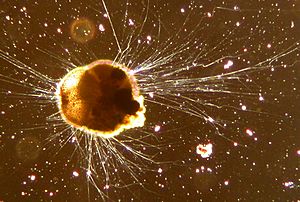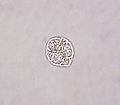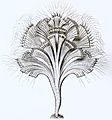Rhizaria facts for kids
Quick facts for kids RhizariaTemporal range: Neoprooproterozoic - Today
|
|
|---|---|
 |
|
| Ammonia tepida is a type of Foraminifera. | |
| Scientific classification |
|
| Domain: | Eukaryota |
| (unranked): | Diaphoretickes |
| Clade: | TSAR |
| Clade: | SAR |
| (unranked): | Rhizaria Cavalier-Smith, 2002 |
| Phyla | |
|
Cercozoa |
|
The Rhizaria are a large group of living things. Most of them are single-celled eukaryotes. This means they are made of just one cell, and their cell has a nucleus. Recently, scientists found a type of Rhizaria that has many cells!
This group was first named by a scientist named Thomas Cavalier-Smith in 2002. There are many different kinds of Rhizaria. They look very different from each other. But most of them are like amoebas. They move using special "false feet" called pseudopods. Many Rhizaria also build amazing shells or skeletons. These structures can be very detailed and beautiful.
Rhizaria are a big part of the fossil record. This means their old shells and skeletons are often found in rocks. Almost all Rhizaria have special parts inside their cells called mitochondria. These mitochondria have folds inside them.
Main Groups of Rhizaria
There are three main groups that belong to the Rhizaria supergroup:
- Cercozoa: These are different kinds of amoebas and flagellates. Flagellates are tiny organisms with whip-like tails. Cercozoa usually have pseudopods. You can often find them in soil.
- Foraminifera: These are amoeba-like creatures. They have special net-like pseudopods. Foraminifera are very common in the ocean. They live on the seafloor, which is called the benthos.
- Radiolaria: These are also amoeba-like organisms. They are known for their beautiful skeletons. Radiolaria live in the ocean as plankton. This means they float in the water.
How Rhizaria Are Related to Other Life
Rhizaria are part of a bigger group called the bikonts. This group also includes plants (like Archaeplastida), some algae (like Chromalveolata), and other tiny organisms (like Excavata). All bikonts are thought to have come from an ancient single-celled organism. This ancestor could eat other things (it was a heterotroph). It also had two whip-like tails called flagella.
A long time ago, many Rhizaria were thought to be animals. This was because they could move and eat other things. But then, scientists started using a five-kingdom system for classifying life. Rhizaria were then placed in the kingdom called Protista.
Later, a scientist named Carl Woese suggested a new way to group life into three main domains. After this, scientists looked more closely at the eukaryote domain. They realized that the "protists" group was not a true natural group. So, they started to split protists into smaller, more natural groups. After a lot of discussion, Rhizaria became one of these new, natural groups.
Images for kids
-
Foraminiferans (Retaria: Foraminifera)
-
Polycystines (Retaria: Radiolaria)
-
Acantharians (Retaria: Radiolaria)
See also
 In Spanish: Rhizaria para niños
In Spanish: Rhizaria para niños













